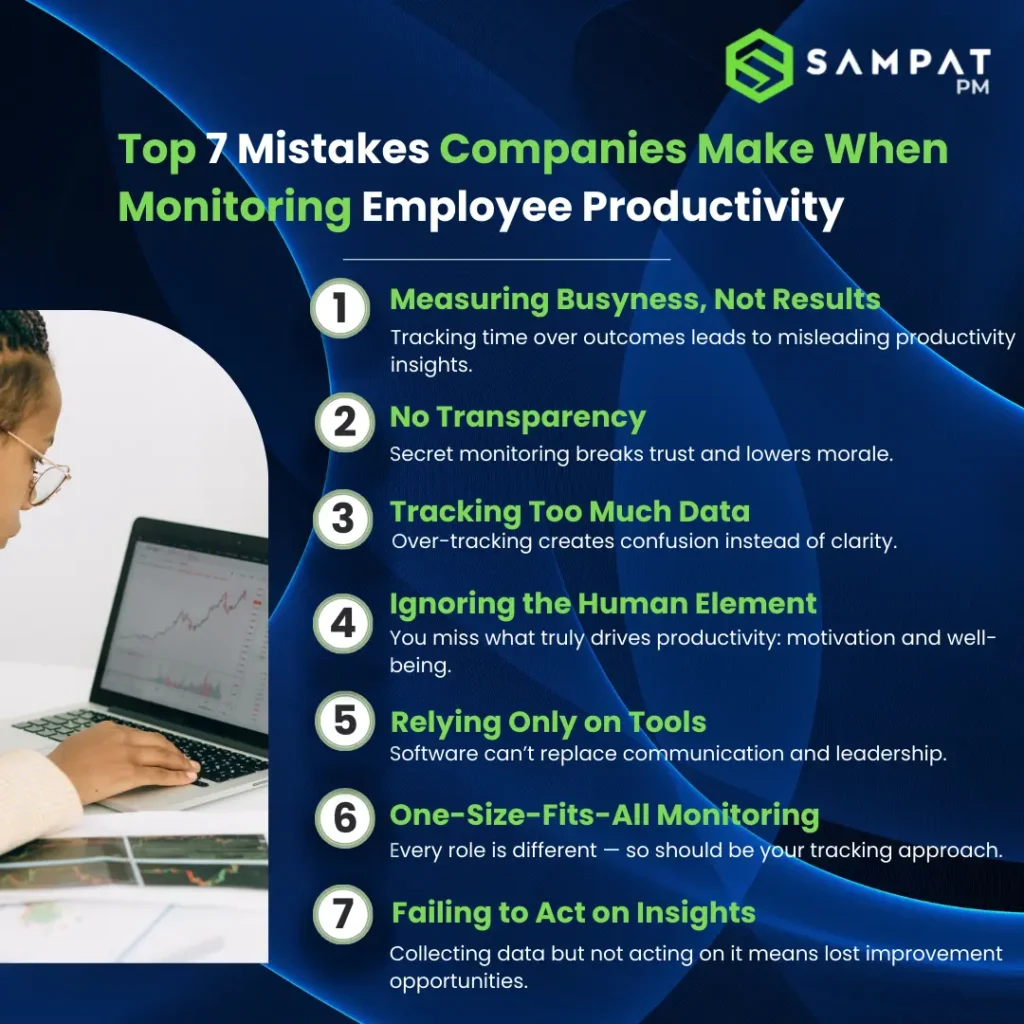
Top 7 Mistakes Companies Make When Monitoring Employee Productivity
In today’s work culture, monitoring employee productivity has become a common practice. With the rise of remote and hybrid work, organizations are investing in tools to track time, tasks, and output. However, despite the best intentions, many companies fall into common traps that not only reduce productivity but also erode employee trust and morale.
Let’s explore the top 7 mistakes companies make when monitoring employee productivity — and how to avoid them.
1. Focusing on Activity Instead of Outcomes
A common mistake is assuming that constant activity is the same as being truly productive. Companies often measure the number of hours worked, keystrokes made, or apps used, assuming these metrics reflect performance. However, staying busy doesn’t necessarily translate to meaningful or efficient work.
Fix: Redirect your measurement approach from tracking activity to evaluating tangible results. Track project completion, quality of work, and contributions to team goals. Empower employees to manage their time while being accountable for deliverables.
2. Using Monitoring Tools Without Transparency
Surveillance-style monitoring, done without informing employees, leads to mistrust, fear, and disengagement. Discovering undisclosed surveillance can break employee trust and negatively affect morale.
Fix: Be upfront about the monitoring process. Clearly explain what will be tracked, the purpose behind it, and how the information will be utilized. Engage employees in discussions about policies to encourage openness and mutual understanding.
3. Tracking Too Much Data
Gathering too much data can overwhelm decision-making processes and stall meaningful analysis. Worse, it may make employees feel like their every move is under a microscope.
Fix: Only collect data that is directly relevant to productivity goals. Focus on key performance indicators (KPIs) that truly reflect employee output and success.

4. Ignoring the Human Element
Productivity is deeply tied to well-being, motivation, and workplace culture. When companies reduce employees to data points, they miss the bigger picture of what drives performance.
Fix: Use productivity data as one part of a broader employee engagement strategy. Combine quantitative metrics with regular check-ins, employee feedback, and recognition programs.
5. Relying Solely on Monitoring for Management
Some managers depend entirely on software to manage their teams, thinking tools will replace communication or leadership. As a result, employees may lose motivation and potential development paths may be overlooked.
Fix: Monitoring tools should complement, not replace, good management practices. Continue to build relationships, coach, and provide support to team members.
6. Not Customizing Monitoring for Different Roles
A one-size-fits-all approach doesn’t work. For example, measuring productivity by time spent on a computer may make sense for data entry roles, but not for creative or strategic jobs.
Fix: Tailor monitoring strategies based on job functions. Define productivity differently for different teams and roles. Flexibility is key.
7. Failing to Act on Insights
Collecting productivity data without acting on it is a wasted opportunity. Companies often gather insights but don’t use them to improve workflows, remove bottlenecks, or support struggling employees.
Fix: Use insights to foster continuous improvement. Identify trends, refine processes, and offer targeted training or resources where needed.
Conclusion
Monitoring employee productivity can be a powerful way to improve performance, but only when done ethically, transparently, and with a focus on people, not just metrics. Avoiding these seven common mistakes will not only boost output but also create a more trusting and engaged workforce.
By placing outcomes over activity, customizing approaches, and using monitoring data to support rather than control, companies can create a culture of high performance and mutual respect.
Keep in mind — effective employee monitoring is designed to support productivity, not to micromanage or create pressure. The goal is to foster a workplace environment where trust, clarity, and performance go hand in hand.



